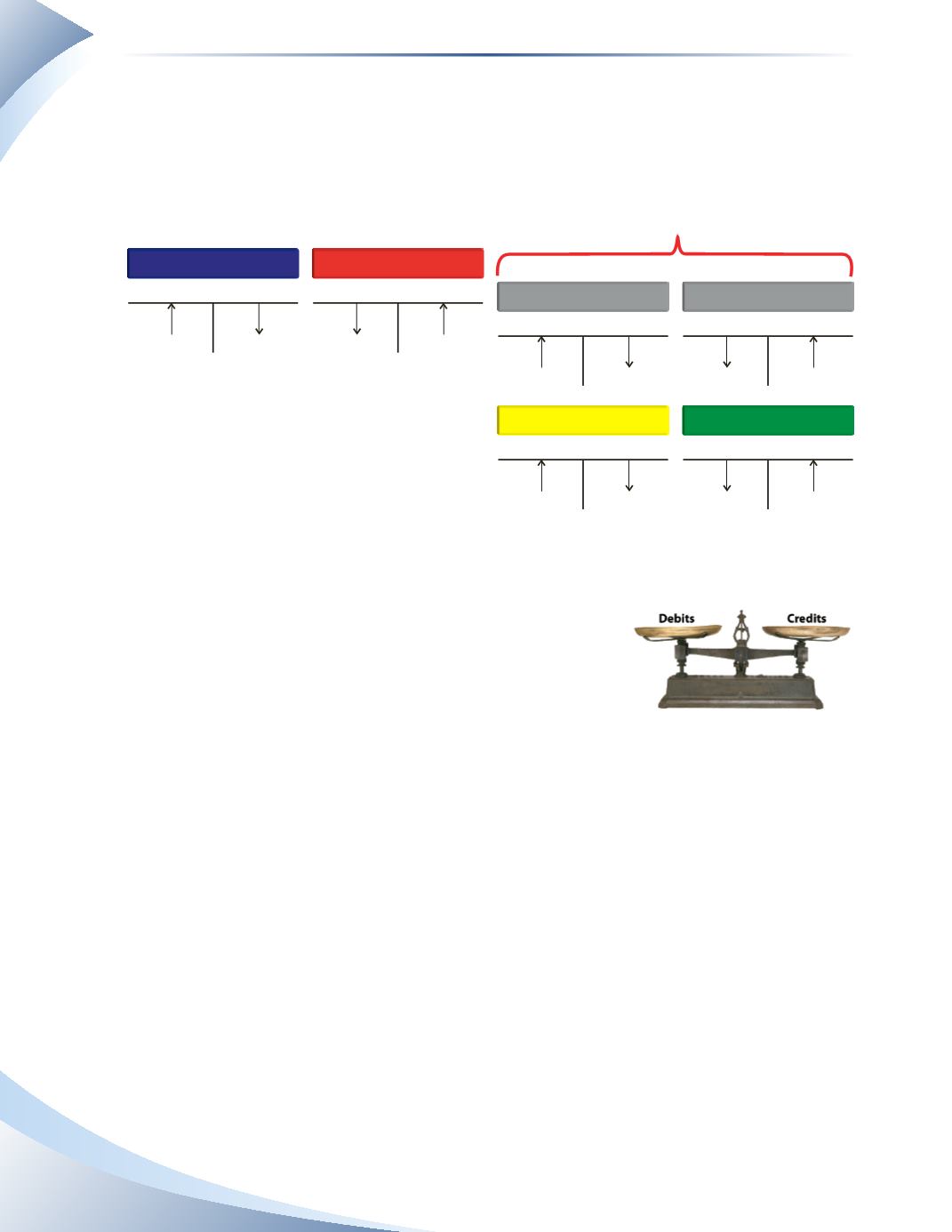
Chapter 4
The Accounting Cycle: Journals and Ledgers
80
For the accounting equation to be correct and for the balance sheet to stay in balance, the total
value of the debits must always equal the total value of the credits. Use the Debit and Credit
Reference Guide shown in Figure 4.1 to help when analyzing transactions.
Debit and Credit Reference Guide
ASSETS
OWNER’S DRAWINGS
EXPENSES
OWNER’S CAPITAL
REVENUE
BANK LOAN
Increase
Increase
Increase
Increase
Owner’s Equity
Assets
=
+
Liabilities
Increase
Increase
Debit
Debit
Debit
Debit
Debit
Debit
Decrease
Decrease
Decrease
Credit
Credit
Credit
Decrease
Decrease
Decrease
Credit
Credit
Credit
________________
figure 4.1
Every transaction will have at least one debit and one credit.
The total of all debits in a transaction must equal the total of all
credits. If debits do not equal credits, the accounting equation
will not balance.
Each type of account also has a normal balance. A
normal balance
will correspond to the side
of the T-account that records the increase and is shown in bold in Figure 4.1. A normal balance
indicates a positive balance for the account. For instance, the cash account (an asset) has a debit
normal balance.
Using the Debit and Credit Reference Guide, let us look at a few sample transactions and see how
to translate increases and decreases into debits and credits.
1.
Provided services to a customer who pays cash.
2.
Paid cash to reduce the principal of the bank loan.
3.
Paid cash for a one-year insurance policy.
4.
Record maintenance expense, which will be paid later.


